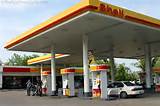The U.S. exported more oil in 2012 than it imported for the first time since 1949. Measured in dollars, fuel is the today’s highest single U.S. export. U.S. production has increased almost 100% since 2008; and now at 10.4 million bpd tops the previous historic peak of 9.6 million bpd in 1970. The trend is more and more.
At the same time, U.S. petroleum consumption has decreased 41% from 20.8 million bpd in 2005 to 8.6 bpd million bpd in 2012, due to increased auto fuel efficiency and the industrial, commercial and residential conversion to natural gas. So why are gas prices so high and climbing? The more we produce and the less we consume, the higher the price.
The answer is that petroleum is no longer a national market. It is global market. U.S. producers are trading our refined fuel to fast growing developing markets. The U.S. is “meeting demand for fuels on a worldwide basis,” according to Thomas Munger, VP of FuelQuest, Inc., a Houston consulting firm. William R. Klesse, CEO of Valero Energy, which has 25 % of the fuel export market, adds, “The markets are actually pulling it, and we actually make more money going to the export market.”
With developing countries driving increasing consumption, while our consumption declines, U.S. fuel flows to foreign markets. Since U.S. producers cannot legally export crude oil, they export refined oil products at a higher profit and import refined products at a high price to consumers. Consequently, we still import 47% of refined and crude oil from foreign sources at a high OPEC controlled price.
Other factors weigh in keep fuel prices exceptionally high in certain regions of the U.S. A 1920 U.S. federal law prohibits shipment of refined fuel from one U.S. refinery port to another, unless shipped in American made vessels and manned by American crews. Good luck! Consequently, we have substantial imbalances in gas prices in different regions of the U.S. Gulf coast refined gasoline cannot get to California or the East coast, where a number of refineries are out of service. So high gas prices weaken the economy of the Eastern seaboard and West Coast. The consumer price index rose 2 percent from February 2012 to February 2013. Three fourths of this rise reflected a 9.1 percent rise in gas prices. Increased gas prices at the pump account of 97% of our 2012 two percent inflation. 2013 looks starker. The national average price of gasoline in February, 2013 was $3.78, rising 1.1 percent in one month from January’s average price of $3.42.
Consumer advocates call for more U.S. refineries. But a number of factors impede this objective. Regulatory costs for refinery expansion and new Greenfield refineries are prohibitive; and environmental activists oppose refinery expansion. Refinement already accounts for 11 percent of fuel cost. More refineries will not reduce gas prices at the pump, so long as the law permits U.S. producers to export refined products. And if this law were changed to prohibit export of refined products, there would be no incentive for producers to invest in more refineries in a falling U.S. market of declining fuel oil consumption. This is one trade-off of a “green” economy.
While Economics posits that excess supply over demand drives down price, too many global marketing factors obviate this dictum in the case of U.S. gas prices. Economic laws are trumped by marketing strategies and practices. Oil is selling for $92 a barrel today; yet gas price at the pump is higher today than when oil was selling for $147 a barrel in 2008.
The implications of this situation are puzzling from a public policy standpoint. President Obama has pledged to double U.S. exports by 2015. This can only be accomplished by a vast increase in fuel export, which is our number one export. This may create more drilling jobs, but if history is a guide, it certainly will raise gas prices at the pump, and squeeze consumption in all other retail sectors. The Federal trade deficit may decrease, but the real economy will be no better off.
The only way out of this conundrum is a shift from gasoline to electric and natural gas powered vehicles. But these options are far off, and have their own global market downsides, which will not spell price relief for American consumers.
Milton Kotler, March 23, 2013


I couldn’t refrain from commenting. Very well written!
If you are pleased with our blog, you will be pleased with our new book Market You Way to Growth: Eight Ways to Win, by Philip and Milton Kotler, 2013, Wiley.
Milton Kotler